Sometimes Mother Nature delivers the perfect week of weather to your Northern Virginia property – 80 degrees during the days and 60 degrees overnight with an ideal 1.5 to 2 inches of steady rainfall over the seven days.
These are the best conditions for growing a lawn. Unfortunately, Mother Nature likes to keep you guessing. When you lack the right amount of rainfall, you have to supplement that water to keep your grass in good health.
It’s hard enough to learn how to water your lawn without considering treatments that have just been applied. But what about when to water after fertilizing? That’s a whole additional consideration. And what if Mother Nature delivers showers when you least expect it? Did she just thwart your best efforts at taking care of your grass? You might even begin to question whether your lawn care professional is really doing a good job or blaming the weather because it’s convenient.
Here, we’ll clear up the common questions that come up concerning how much to water after fertilizing so you can have a more clear picture of what to do and what to expect.
Fertilizer Facts for Northern Virginia
Let’s face facts: Lawn care is a science. So when it comes to fertilization, there’s some science to this aspect of lawn care, too.
To understand when to water after fertilizing, let’s start by discussing why your lawn needs fertilizer in the first place.

You might think lawns should receive enough nutrients from your soil or that they should be able to grow without supplemental fertilizer. But there are quite a few factors at play here in determining why your lawn needs additional nutrients. Let’s look deeper at them to help you better understand your Northern Virginia lawn’s needs.
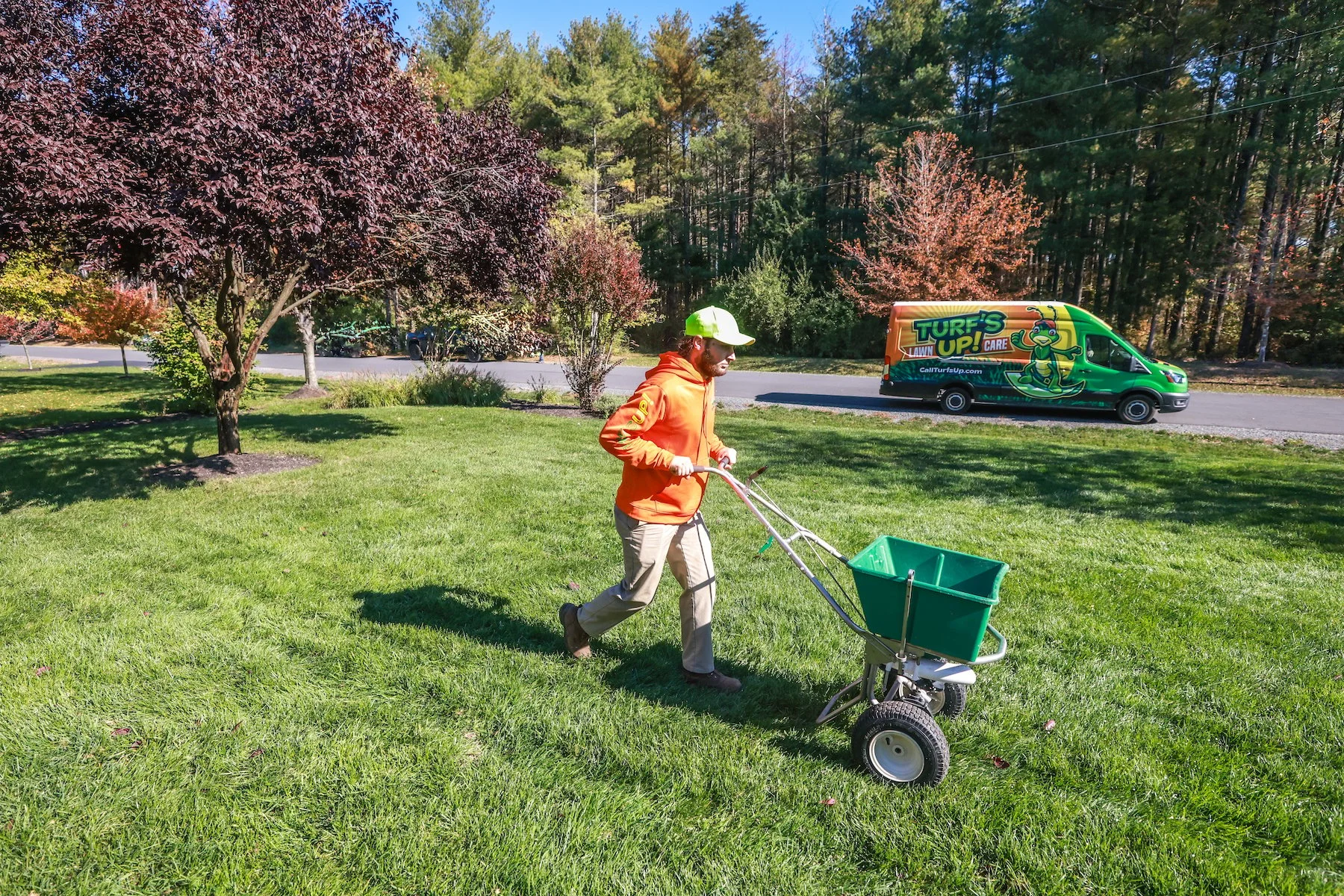
Like all plants, your lawn needs water, sunlight, oxygen, and nutrients to grow healthy and strong. But the soil your plants grow in goes through quite a lot in its lifetime. The digging involved in building your home, for instance, strips your soil of nutrients.
The nutrient supply in soils is not endless. And that’s where fertilizer comes into the picture. It provides your lawn with what your soil might be lacking so it can grow healthy and strong and become resistant to weed and disease infestations, as well as hold up to regular foot traffic.
Fertilizer Done Right
To be effective, fertilizer must be done right. When to water after fertilizing starts with fertilizing correctly.
Conducting a soil test is the first step. Your lawn care professional will do this to gather data about your current soil condition. The results will reveal your lawn soil’s current pH. The best pH range for Northern Virginia lawns is between 6 and 7. High pH levels above 7 mean your soil is alkaline, and low pH levels below 6 mean that your lawn is more acidic. Northern Virginia soils tend to be on the acidic side, which means they require lime to keep the pH in check.
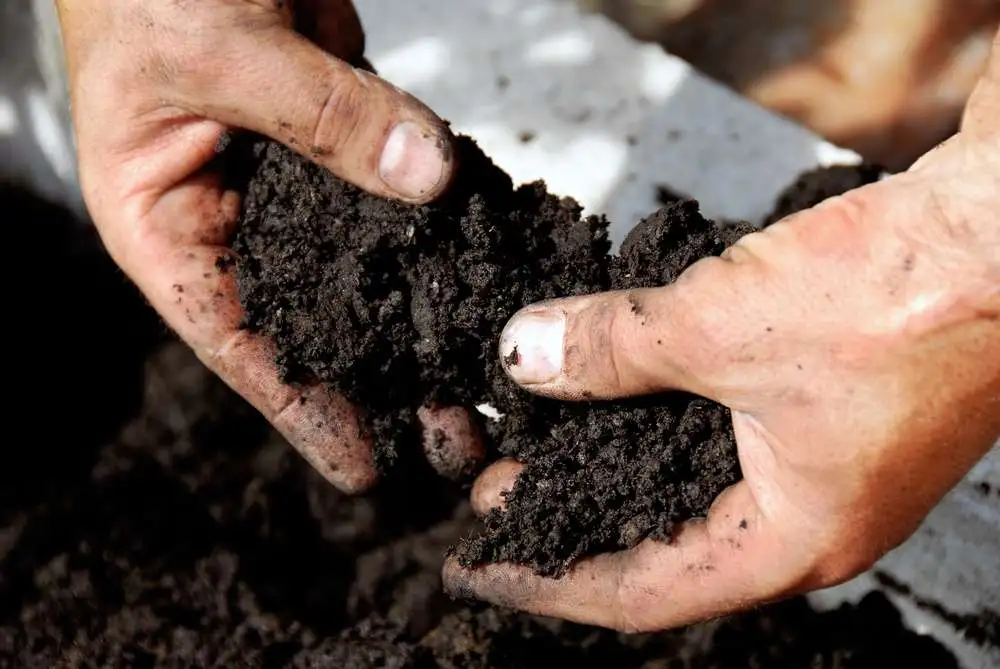
But if your lawn’s pH is very low, such as in the 4s, then you’ll need a more corrective lime application. The goal: You want to get your pH in the optimum level range so your lawn is capable of taking in nutrients. Too high or too low, and it’s not happening.
Once you have these soil test results, you need the right products applied in the right way and at the right times to ensure success.
Timing is incredibly important. Throughout the year, you receive a few fertilizer applications – and they all require proper timing. Commercial-grade products are also key. Lawn care experts use these products and are trained to apply them properly, so your lawn gets what it needs.
How Much to Water After Fertilizing
Once a lawn care service is complete, when to water after fertilizing is actually dependent on the type of fertilizer you received.
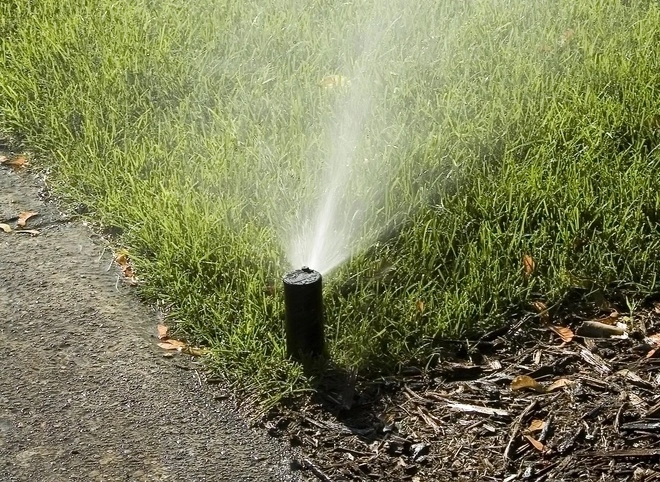
Let’s look more closely at the two different types and how water impacts them.
1. When to Water After Fertilizing – Granular Applications
If your lawn care professional applies granular fertilizer or even granular insecticide to your lawn, those products need to be watered in. This helps activate the product.
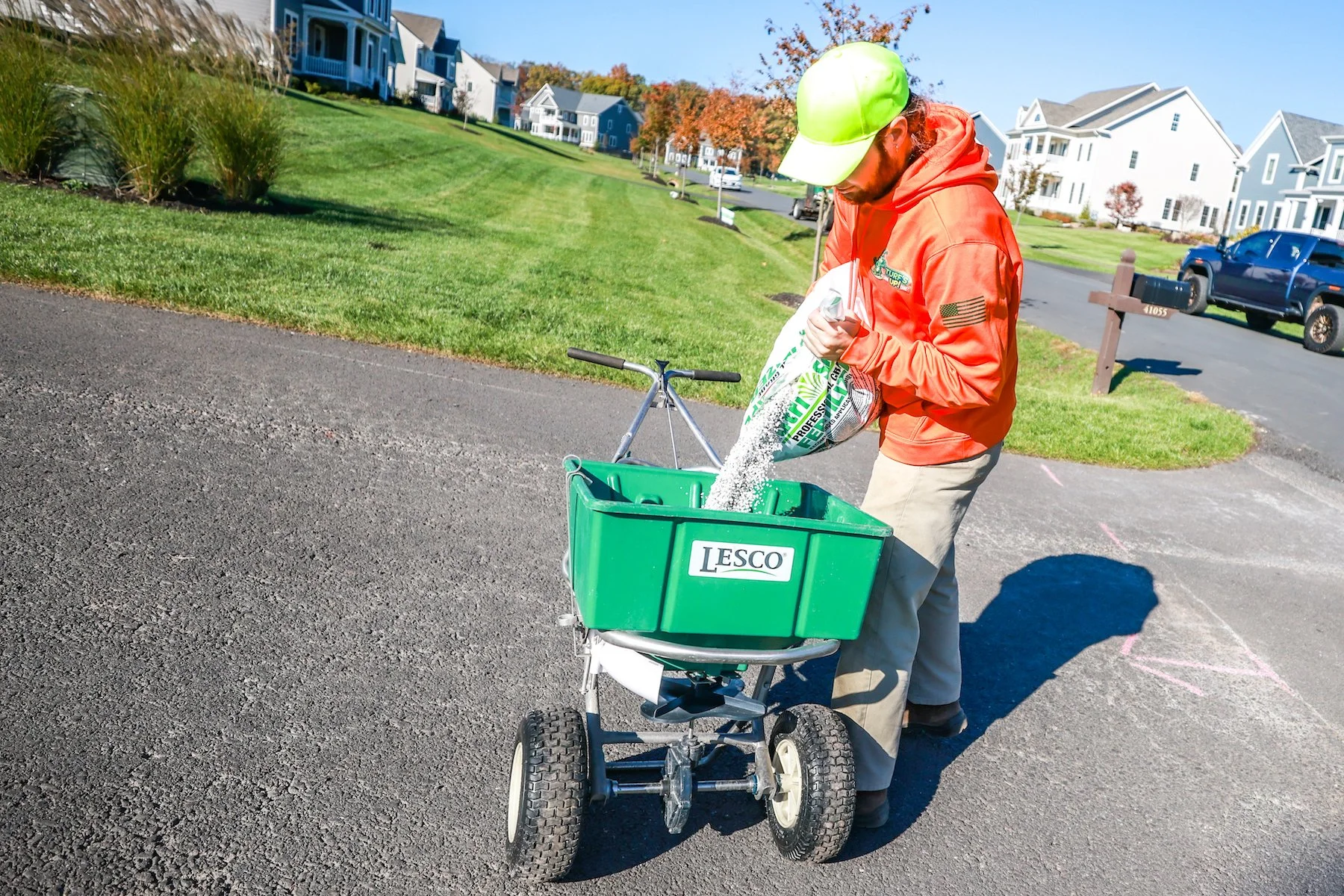
Slow-release granular fertilizer is not easily washed away and doesn’t dissolve quickly in water. So watering is actually a good thing. And before you start asking how much to water after fertilizing, we’ll ease your concerns and say that, generally, normal rainfall or regularly scheduled irrigation is adequate.
Usually, even if you had heavy rain after a granular fertilizer application, this will not hamper their effectiveness at all.
2. When to Water After Fertilizing – Liquid Applications
If the fertilizer application you receive is liquid versus granular, things work a little bit differently when it comes to answering the question, “Should you water your lawn after fertilizing?”
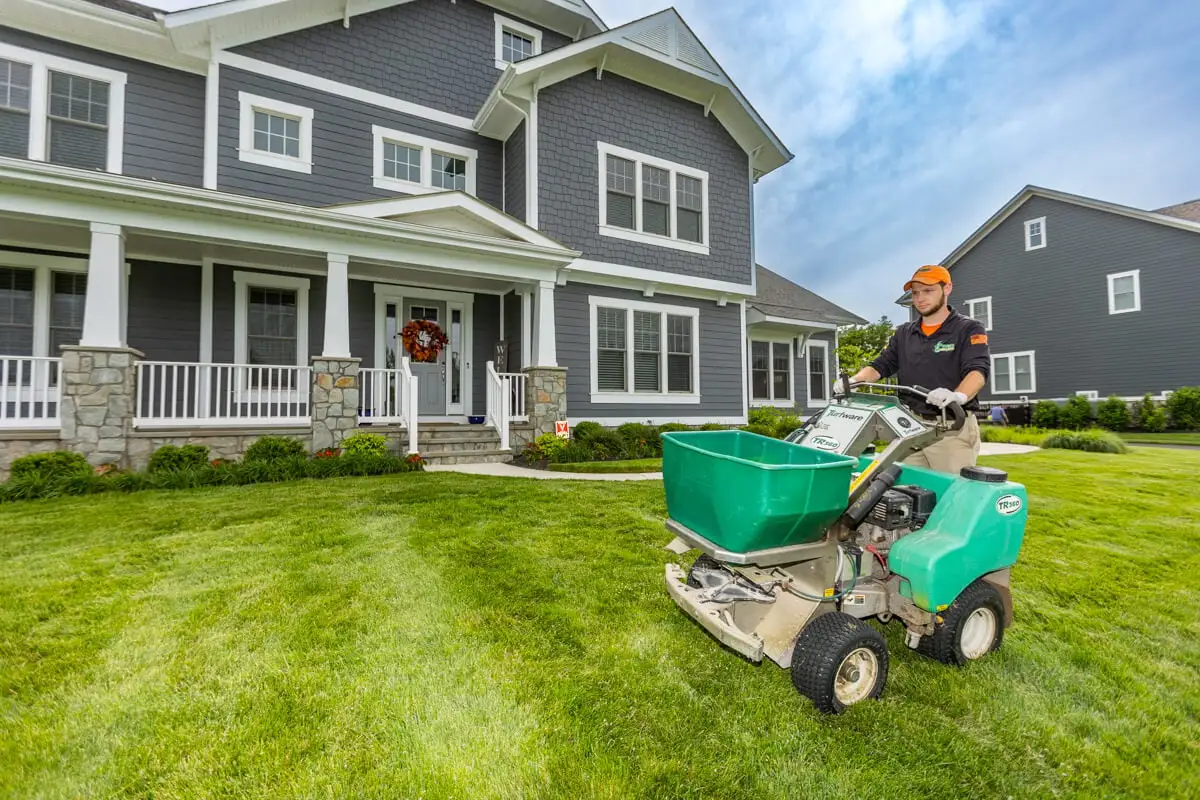
While liquid fertilizers are water soluble and have slow-release properties similar to granular products, they hold onto the plant material and organic matter when sprayed and the plant quickly absorbs them.
But these products need 30 minutes of drying time before becoming rainfast. This means watering could negatively impact their effectiveness if they’re washed away before that.
Water is Actually a Key Partner in Your Lawn Care
When it comes to having a thick, green, and thriving lawn, water can certainly help. Properly watering your Northern Virginia lawn by giving it 1 to 2 inches of water per week (including rainfall) gives it the moisture it needs.
How often you need to do this will be different each week based on rainfall, but daily is typically too much for a healthy lawn. Stick to one to two times per week, especially if Mother Nature isn’t already providing you with any deep, soaking rains during a particular week.
Wondering how you can tell if your lawn is getting enough water. Look at your lawn’s color. When it receives enough water, it’ll be nice and green. When it doesn’t receive enough water, it may start to fade to a dull green, yellow, or even brown. But that can also be a sign of overwatering your lawn, so pay attention to the feel of the lawn too. If it’s overwatered, it may also feel spongy. When you walk through your lawn and it’s too dry, you may see impressions left by your shoe. A well-watered healthy lawn will have grass blades that bounce back to standing after being walked on.
When you water, your ultimate goal is to have water moisten the soil a few inches deep. Usually, this equates to 45 minutes to 60 minutes per area or zone if you’re using an irrigation system. Water your lawn in the early morning hours to give it plenty of time to soak into the soil and dry out before nightfall.
While water is great for your lawn, overwatering can do almost as much damage as underwatering. It can lead to disease, dull your lawn's color, make your lawn prone to insect damage, increase your stormwater runoff or puddles in your lawn, and unnecessarily elevate your water bills. No one wants to deal with these issues.
On top of proper watering, correct fertilization, as well as insect, weed, and disease prevention and control, helps keep your lawn in great health. And when to water after fertilizing is a part of helping these products do their jobs.
Get Help With How Much to Water After Fertilizing With Turf’s Up
No one wants to waste money on fertilizer applications or see increasing water bills.
Properly figuring out how much to water after fertilizing can ensure your lawn treatments get the best chances of working properly for you and improving your lawn.
If this still sounds confusing, working with the right lawn care professional can help. They can educate you on what your lawn needs and can give you watering tips. They can also help you better understand what your lawn needs and give you tips on proper mowing as well.
Then you’ll have all the answers at your fingertips and never have to worry about whether your lawn is getting what it needs. And isn’t that the best way to enjoy your gorgeous green lawn?
Ready to learn why Turf’s Up could be your totally awesome choice for lawn care services in Northern Virginia? We’re stoked to learn more about you and help you have the best lawn on the block. Get started today with a free quote. Together, we can prepare a customized plan that is perfect for you and your lawn.
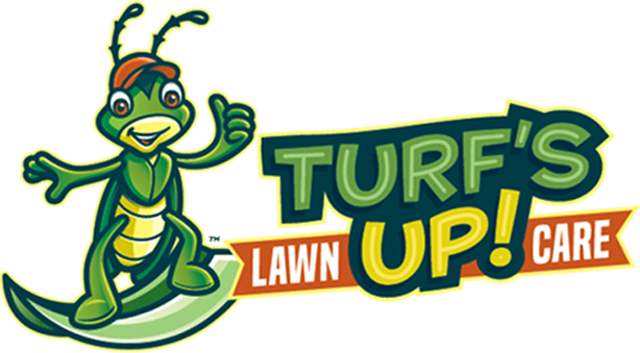
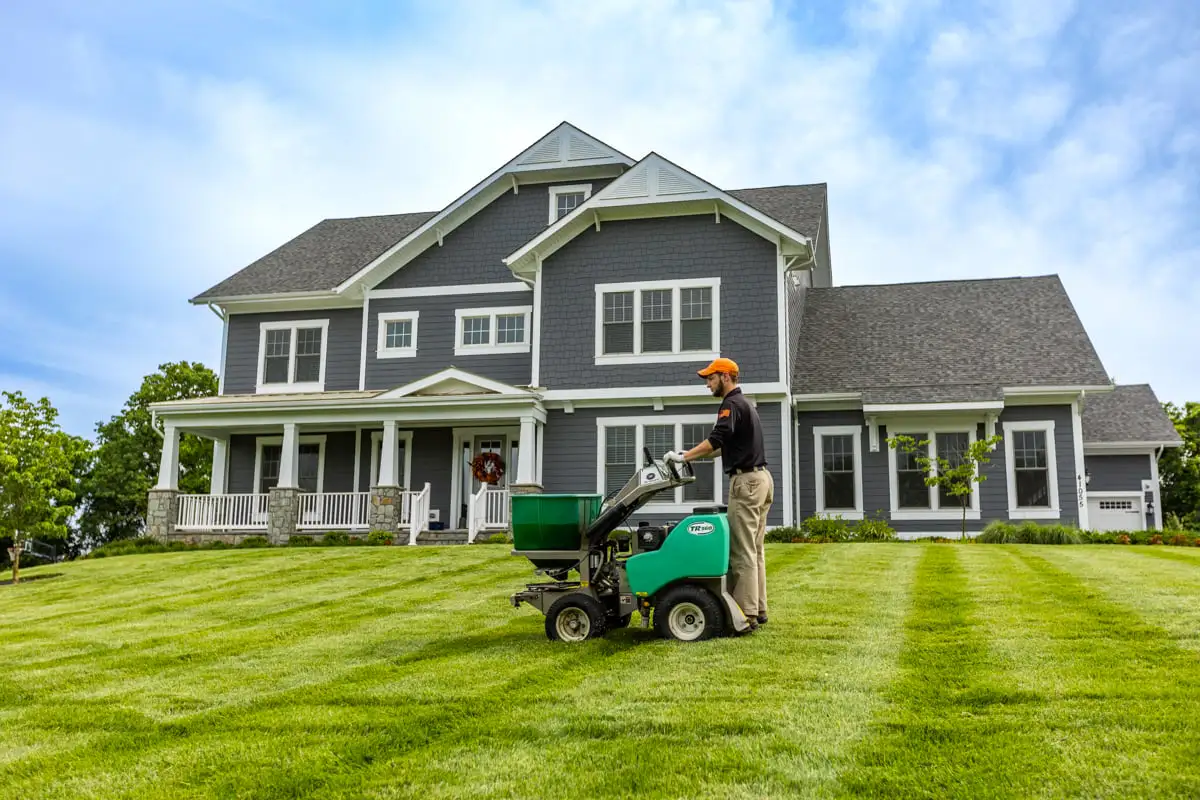




Comments (0)
Thanks for your comment!
Thanks for your feedback! Your comments have been successfully submitted! Please note, all comments require admin approval prior to display.
Error submitting comment!
There is a problem with your comment, please see below and try again.